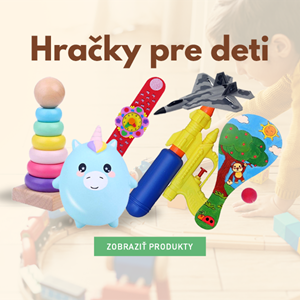Digital twin assistants serve as virtual counterparts, continuously learning from your routines, preferences, and behaviors. By analyzing patterns and data, these AI-powered assistants intelligently streamline daily tasks, anticipate your needs, and boost overall efficiency.
This emerging AI technology creates a seamless connection between the physical and digital realms. It transforms ordinary daily interactions into optimized experiences, offering proactive guidance and insights that help manage time, energy, and priorities more effectively.
What is a Digital Twin Assistant?
A digital twin assistant is an AI-driven digital counterpart that mirrors your habits, routines, and decision-making patterns in a virtual environment. Unlike traditional virtual assistants that respond only to commands or queries, digital twins continuously learn from the data you generate—your calendar events, health metrics, communication style, and even your behavioral tendencies.
Over time, this learning allows the digital twin to anticipate your needs, suggest actionable solutions, and optimize your daily schedule proactively. For example, you might notice that late-night emails affect your sleep, then recommend a better workflow or adjust reminders accordingly. Some advanced digital twins can simulate the outcomes of decisions before they’re made, from financial planning to lifestyle adjustments, giving a clearer picture of potential consequences.
Essentially, a digital twin assistant acts as a personal life optimizer: a proactive, adaptive companion embedded in your digital ecosystem, designed to enhance efficiency, well-being, and decision-making—almost like having a smart, intuitive reflection of yourself working alongside you 24/7.
Key Benefits for Daily Life
Personalized Planning and Scheduling
Digital twin assistants transform the concept of scheduling from a passive task into a dynamic, proactive system. Instead of simply reminding users of appointments, these AI-powered companions analyze patterns in behavior, energy levels, and preferences to anticipate needs before they arise. For example, they can suggest the quickest route to work by factoring in real-time traffic, weather conditions, or public transit delays, ensuring that plans stay on track without last-minute stress.
Beyond just travel and logistics, digital twins holistically optimize daily routines. They can schedule meals at times when energy dips are most likely, recommend exercise sessions that align with natural peaks in focus and stamina, and even prompt restorative breaks to prevent burnout. Over time, the assistant learns subtle patterns—like the types of tasks that cause the most friction, or periods when productivity naturally lags—and adapts recommendations accordingly. This intelligent foresight reduces decision fatigue, streamlines everyday choices, and creates a rhythm to life that feels almost effortless, allowing more time and mental energy to focus on what truly matters.
Smart Health and Wellness Support
Wellness management evolves from simply tracking metrics to actively optimizing health outcomes. Integration with wearable devices enables continuous monitoring of vital signs, including heart rate, blood pressure, and oxygen levels, while also tracking sleep quality, physical activity, and stress indicators. The resulting data generates highly personalized insights, revealing trends and patterns that may otherwise remain unnoticed.
Beyond simply reporting metrics, the assistant can provide actionable recommendations tailored to individual needs. For instance, adjust meal timing to boost energy during the afternoon slump, modify exercise routines to match peak performance periods, or introduce mindfulness practices to reduce stress. Advanced digital twins go a step further by simulating potential lifestyle changes—showing how increasing daily steps, shifting sleep schedules, or experimenting with nutritional adjustments could affect mood, stamina, and overall well-being. This predictive capability empowers users to make informed, data-driven decisions, creating a health and wellness plan uniquely aligned with their body, habits, and lifestyle goals.
Enhanced Productivity and Decision-Making
Digital twin assistants elevate productivity beyond traditional task management by actively analyzing and optimizing workflows. They examine tasks, deadlines, and priorities to identify the most efficient order for completing projects, highlight potential bottlenecks, and offer data-driven strategies for maximizing output. This dynamic approach ensures that time and energy are allocated where they matter most, reducing wasted effort and improving overall efficiency.
In addition to optimizing daily workflows, digital twins provide predictive insights that support strategic decision-making. They can simulate different scenarios—such as evaluating the potential outcomes of financial investments, weighing the pros and cons of project choices, or forecasting the impact of workload adjustments on deadlines. By visualizing these outcomes in advance, users can make informed decisions more confidently and swiftly. This ability to anticipate challenges and opportunities not only reduces stress and uncertainty but also transforms complex decision-making into a manageable, streamlined process, effectively acting as a personal strategist for both professional and personal life.
[wp_GAM_ADS_InPos2_shortcode]
Seamless Home and IoT Integration
Digital twin assistants have the potential to transform any smart home into a fully adaptive, responsive environment. By connecting to IoT devices—from lighting and thermostats to speakers and appliances—the assistant can anticipate and respond to needs automatically, creating a living space that feels intuitive and personalized. It can adjust lighting to match the time of day or your current activity, regulate temperature to maintain comfort during work or rest, and control sound or music to enhance focus, relaxation, or energy.
For example, in the morning, the assistant could gradually brighten the lights, draw the curtains, and play energizing music to support a smooth wake-up routine. During work hours, it might lower ambient noise, adjust lighting to reduce eye strain, or even set optimal room temperature for concentration. In the evening, the digital twin can prepare the home for rest—dimmed lights, calming sounds, and a comfortable temperature—helping to signal the body and mind to unwind.
By anticipating patterns and acting proactively, the assistant removes the need for constant manual adjustments, creating a seamless, harmonious connection between digital insights and the physical environment. This integration not only enhances comfort but also boosts efficiency and overall quality of life, making the home a truly intelligent partner in daily routines.
Learning and Adaptation
One of the defining features of AI-powered digital twin assistants is their ability to learn and evolve. Unlike static tools, they continuously analyze data from daily activities, habits, and preferences, gradually building a comprehensive understanding of individual behavior. This ongoing learning enables the assistant to become increasingly intuitive, anticipating needs and offering suggestions before problems even arise.
For example, after observing patterns in work habits, a digital twin might proactively schedule focused work blocks during your peak productivity hours, or recommend breaks when attention wanes. In health and wellness, it could identify subtle trends in sleep or activity, suggesting adjustments to improve energy and overall well-being. Over time, the assistant’s recommendations feel almost prescient, as if it knows what you need before you even ask—transforming from a simple helper into a highly adaptive personal companion that continuously fine-tunes daily life, learns, and evolves.
Unlike static tools, they continuously analyze data from daily activities, habits, and preferences, gradually building a comprehensive understanding of individual behavior. This ongoing learning enables the assistant to become increasingly intuitive, anticipating needs and offering suggestions before problems even arise.
Challenges and Considerations
Despite their transformative potential, AI-powered digital twin assistants raise several important challenges that must be carefully managed. At the forefront is privacy and security. These assistants rely on vast amounts of highly personal data—including daily routines, health metrics, communication patterns, and financial information—making robust encryption, secure storage, and user-controlled access essential. Without robust protections, personal data remains at risk of unauthorized access or exploitation.
Beyond technical security, there are significant ethical considerations. Over-reliance on a digital twin could lead to dependency, potentially reducing personal initiative or critical thinking. Questions of autonomy arise when an AI begins making proactive decisions or recommendations that influence daily life. Additionally, interacting with a digital version of oneself may have psychological implications, such as blurring the line between human judgment and AI guidance or affecting self-perception and identity. Developers and users alike must navigate these concerns thoughtfully, balancing the convenience and intelligence of digital twins with transparency, consent, and ethical usage practices.
The Road Ahead
The future of AI-powered digital twin assistants is poised to reshape daily life in profound ways. As machine learning algorithms and data analytics become increasingly sophisticated, these digital counterparts will move beyond reactive support to proactive, predictive guidance. They will seamlessly manage complex aspects of life—coordinating schedules, optimizing workflows, monitoring health, and even anticipating emotional and cognitive needs.
In practical terms, a digital twin could suggest the most effective time for a workout based on energy levels, adjust home environments to match mood and productivity, or simulate financial and lifestyle choices to show potential outcomes before decisions are made. Over time, they will evolve into highly personalized companions, capable of enhancing well-being, efficiency, and even creativity. By integrating fully into digital and physical ecosystems, these assistants promise a life where daily tasks are streamlined, decisions are informed, and personal experiences are more intentional and satisfying—turning the vision of a smarter, more balanced life into a reality.
Revolutionize Life with Smart Digital Twin Assistants
As AI continues to advance, digital twin assistants will evolve from tools into true lifestyle companions. They could help manage personal finances, optimize travel plans, enhance learning, or even suggest social interactions based on past experiences and preferences. In essence, they promise a life where mundane tasks are streamlined, decisions are smarter, and personal well-being is supported continuously.
By bridging the gap between the virtual and physical self, AI-powered digital twins have the potential to redefine how people interact with technology—turning everyday living into a more efficient, personalized, and proactive experience.








